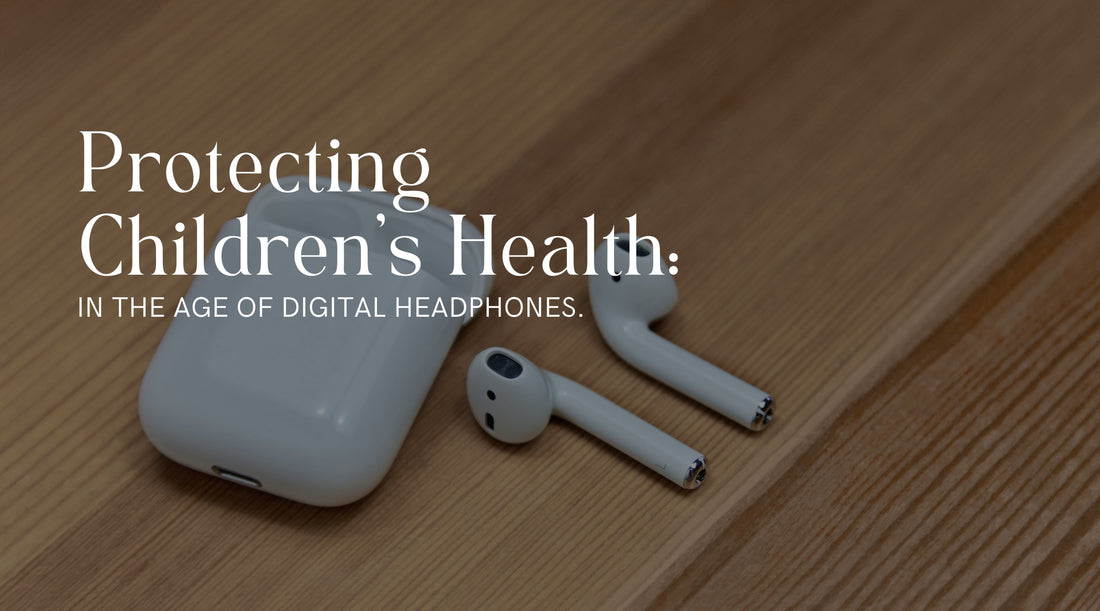
Protecting Children's Health in the Age of Wireless Headphones
Share
The widespread adoption of wireless headphones among children and teenagers has transformed how young people consume audio content. While these devices offer unprecedented convenience, emerging scientific evidence suggests we need to carefully examine their impact on developing brains.
Understanding Wireless Technology
Wireless headphones utilise two primary forms of radiation:
- Bluetooth radio-frequency (RF) radiation for device connectivity
- Near-field magnetic induction (NFMI) between earbuds
These devices continuously emit radio-frequency radiation whether in use or not, with the radiation being absorbed into the skull, brain, and ear tissues.
Why Children Face Greater Risks
Anatomical Differences:
Children's unique physical characteristics make them more susceptible to radiation effects:
- A 5-year-old's skull is approximately 0.5mm thick
- A 10-year-old's skull measures about 1mm
- Adult skulls are roughly 2mm thick
This thinner skull barrier allows deeper radiation penetration into developing brain tissue. Additionally, children's heads contain higher moisture and ionic content, leading to greater conductivity and RF energy absorption compared to adults.
Scientific Evidence of Impact
Recent Research Findings:
A 2024 study published in Scientific Reports found a strong correlation between prolonged daily use of Bluetooth headsets and increased risk of thyroid nodules. The European Parliament's 2021 research report "Health Impact of 5G" concluded that commonly used RF frequencies are probably carcinogenic for humans.
Documented Effects:
Research has shown several potential impacts:
- Blood-brain barrier disruption
- Cellular stress
- Genetic damage
- Changes to the reproductive system
- Learning and memory effects
Current Safety Standards
The Environmental Working Group's peer-reviewed study recommends that children's exposure should be 200-400 times lower than current FCC limits. The current FCC standards:
- Set maximum SAR at 0.08 watts per kilogram for whole-body exposure
- Have not been updated in 25 years
- Don't include separate standards for children
Understanding Bluetooth Classifications
Not all Bluetooth devices emit equal amounts of radiation. There are three classes:
- Class 1: 100 mW power output, 300-foot range
- Class 2: 2.5 mW power output
- Class 3: 1 mW power output, 3-foot range
Newer models of Bluetooth headsets use Class 1 Bluetooth, meaning they emit higher radiation levels compared to other Bluetooth devices.
Expert Perspectives
Dr. Joel Moskowitz, Director of the Center for Family and Community Health at Berkeley's School of Public Health, explains that low-intensity microwave radiation can affect the blood-brain barrier, potentially leading to various neurological conditions.
Protective Measures
Practical Recommendations:
- Use wired alternatives when possible
- Implement regular breaks from device use
- Keep devices away from the body when not in use
- Consider air-tube headphones for minimal radiation exposure
- Use speaker mode when appropriate
Scientific Consensus
Over 3,500 medical doctors have signed a 2020 consensus statement acknowledging that wireless radiation can damage biological systems at levels below current government limits. Multiple studies have demonstrated that children can absorb up to ten times more radiation in their bone marrow compared to adults.
Looking Forward
While wireless technology continues to evolve, the scientific community emphasises the need for:
- Updated safety standards specifically addressing children's vulnerability
- Continued research into long-term effects
- Better public awareness about radiation exposure
- Implementation of precautionary measures
Balanced Approach
The goal isn't to eliminate technology use but to implement safer practices. The Korean study of 1,928 children demonstrated increased health risks from prolonged RF exposure, highlighting the importance of mindful technology use.
This evidence-based approach to wireless technology can help families make informed decisions about their children's exposure to electromagnetic radiation while still benefiting from technological advances.
As wireless headphones become increasingly prevalent in children's lives, it's crucial for parents, educators, and policymakers to understand the potential risks associated with prolonged use. While the convenience and entertainment value of these devices are undeniable, the developing brains and bodies of children require special consideration. By implementing protective measures, staying informed about the latest research, and advocating for updated safety standards, we can help ensure that children can safely enjoy the benefits of technology without compromising their long-term health.
